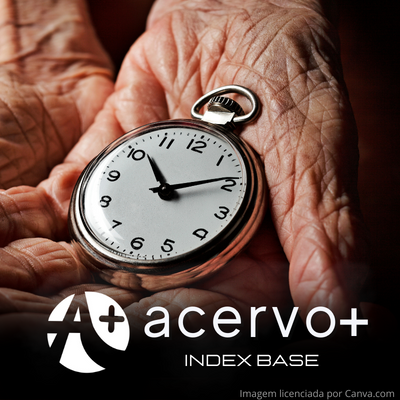Prolapso de órgãos pélvicos e envelhecimento feminino: uma revisão narrativa
##plugins.themes.bootstrap3.article.main##
Resumo
Objetivo: Revisar de forma didática os fatores permeadores do Prolapso de órgãos pélvicos nas mulheres idosas. Revisão bibliográfica: O Prolapso de Órgãos Pélvicos consiste na descida de determinadas estruturas através da vagina, sua causa é na maioria das vezes multifatorial, sendo as principais: parto vaginal, macrossômia fetal e história familiar positiva, ele está intimamente ligado a população idosa feminina. A sintomatologia inclui: dispareunia, sintomas urinários, intestinais e disfunção sexual. O tratamento pode ser cirúrgico ou clínico a depender do grau de gravidade da doença, da idade da paciente e condições de realizar a cirurgia, o tratamento clínico tem como principal indicação o pessário, um dispositivo mecânico vaginal com a função de sustentação da musculatura e dos órgãos pélvicos, ele tem a vantagem de ser um procedimento de fácil utilização, rápido e seguro, porém pode aumentar o corrimento vaginal. A colpopexia Sacroespinhal é uma possibilidade de tratamento cirúrgico, tendo como vantagens a preservação da vagina e consequente vida sexual. Considerações finais: É evidente a importância da avaliação periódica dessas pacientes, com profissionais capacitados, tendo em vista o diagnóstico precoce e tratamento de forma segura, garantindo assim melhor qualidade de vida no seu envelhecimento.
##plugins.themes.bootstrap3.article.details##
Copyright © | Todos os direitos reservados.
A revista detém os direitos autorais exclusivos de publicação deste artigo nos termos da lei 9610/98.
Reprodução parcial
É livre o uso de partes do texto, figuras e questionário do artigo, sendo obrigatória a citação dos autores e revista.
Reprodução total
É expressamente proibida, devendo ser autorizada pela revista.
Referências
2. ALVES GTS, et al. Existe relação entre etnia e a incidência de prolapsos genitais?. Fisioterapia Brasil, 2021; 22(5): 697-711.
3. ARAUJO JEL, et al. Abordagem fisioterapêutica na reabilitação da musculatura do assoalho pélvico em mulheres com prolapso genital. Fisioterapia Brasil, 2020; 21(4): 388-395.
4. ARBUCKLE J, et al. Prevalence and Awareness of Pelvic Floor Disorders in Female Adolescents Seeking Gynecologic Care. J Pediatr Adolesc Gynecol, 2019; 32(3): 288-292.
5. COELHO SCA, et al. Can the Pessary Use Modify the Vaginal Microbiological Flora? A Crosssectional Study. Revista Brasileira de Ginecologia e Obstetrícia [online], 2017; 39: 169-174.
6. COELHO SCA, et al. Quality of life and vaginal symptoms of postmenopausal women using pessary for pelvic organ prolapse: a prospective study. Revista da Associação Médica Brasileira [online], 2018; 64: 1103-1107.
7. COLLINS S, et al. The effect of pessaries on the vaginal microenvironment. Am J Obstet Gynecol, 2015; 212(1): 60.
8. CÓRDOBA M, et al. Revisión sistemática del tratamiento conpesarios en el prolapso de órganos pélvicos (POP). Arch Esp Urol, 2021; 74(3): 306-316.
9. CREMA IL, et al. Repercussões da Menopausa para a Sexualidade de Idosas: Revisão Integrativa da Literatura. Psicologia: Ciência e Profissão [online], 2017; 37: 753-769.
10. DUBINSKAYA A, et al. The impact of prior prolapse repairs on surgical outcomes with minimally invasive sacral colpopexy. Int Urogynecol J, 2020; 31(10): 2061-2067.
11. FANTE J, et al. Do Women have Adequate Knowledge about Pelvic Floor Dysfunctions? A Systematic Review. Revista Brasileira de Ginecologia e Obstetrícia, 2019; 41(8): 508-519.
12. FERREIRA HL, et al. Protocolo para tratamento de prolapso de órgãos pélvicos com pessário vaginal. Acta Paulista de Enfermagem [online], 2018; 31(6): 585-592.
13. FRANÇA M, et al. Cervical Pessary Plus Progesterone for Twin Pregnancy with Short Cervix Compared to Unselected and Non-Treated Twin Pregnancy: A Historical Equivalence Cohort Study (EPM Twin Pessary Study). Revista Brasileira de Ginecologia e Obstetrícia [online], 2020; 42(10): 621-629.
14. FREITAS L, et al. Pelvic floor muscle knowledge and relationship with muscle strength in Brazilian women: a cross-sectional study. Int Urogynecol J, 2019; 30(11): 1903-1909.
15. GARDE-GARCIA H, et al. Estudio comparativo entre pacientes sometidos a colposacropexia laparoscópica con y sincirugía previa para el tratamiento del prolapso apical. ArchEsp Urol, 2021; 74(6): 564-570.
16. GONZÁLEZ-ENGUITA C, et al. Estado actual de la Colposacropexia Laparoscópica (CSPL) en la corrección del Prolapso de Órganos Pélvicos (POP). Arch Esp Urol, 2017; 70(4): 400-411.
17. MAJCHRZYCKI M, et al. The importance of polymorphic variants of collagen 1A2 gene (COL1A2) in the development of osteopenia and osteoporosis in postmenopausal women. Ginekol Pol, 2017; 88(8): 414-420.
18. MENG Q, et al. A associação entre polimorfismos do gene do colágeno e aneurismas intracranianos: uma meta-análise. Neurosurg Rev, 2019; 42: 243-253.
19. PRUDENCIO C, et al. Knowledge of pelvic floor disorders in young women: a cross-sectional study. Fisioterapia em Movimento, 2022; 35: 35607.
20. ROSA JP, et al. Association between col1a2 Polymorphism and the Occurrence of Pelvic Organ Prolapse in Brazilian Women. Rev Bras Ginecol Obstet, 2019 ;41(1): 31-36.

